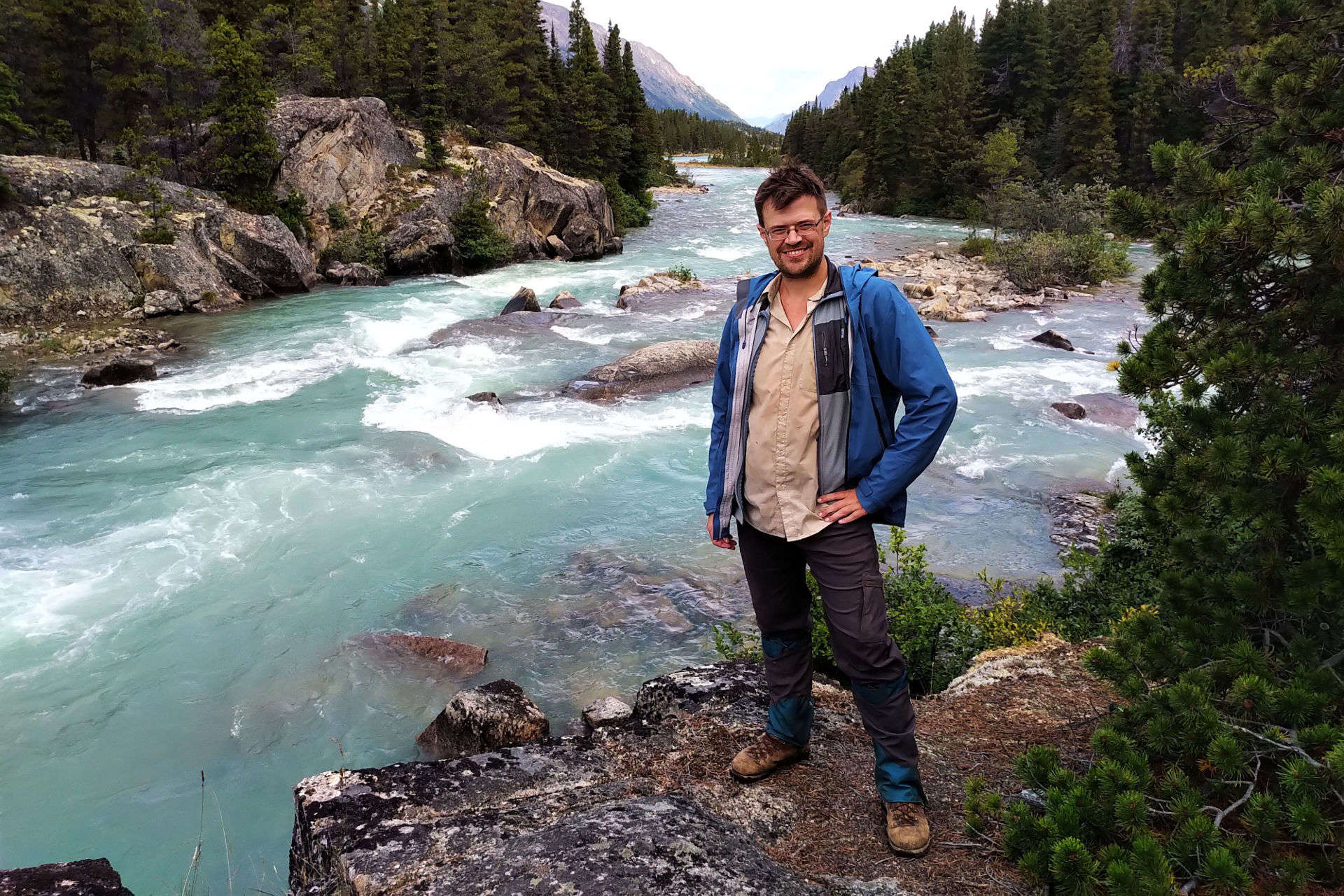It is 2022. Every trail of consequence in the Canadian Rockies has been shot through with YouTube videos and dissected by bloggers, and every park has detailed descriptions online. A book becomes dated with every spring flood and summer fire, while the forums and the Facebooks carry updates in close to real time. Do you still need to spend $29.95 on a trail guide?
When hiking a maintained trail, even a long and difficult one, the answer has to be no. You can learn everything you need for free, provided you can endure clickbait, trash, and crass self-promotion in some stranger’s report. It’ll even be more detailed. There is no park-spanning guide that could surpass anything focused on a single trail, not without being 50,000 pages long.
Yet, should you hike the Canadian Rockies, absolutely get the Canadian Rockies Trail Guide, the long-awaited tenth edition of which has been released in May 2022. Because there are things only trail guides do. The limitations of two covers, finite pages, and infrequent updates allow the creation of a resource which other media theoretically could match but never, ever do.
They capture information concisely and clearly in one place. They let you find the trail you’ll want to hike next summer as well as plan the one you’ve already decided on. They show routes and possibilities videos only gesture at. They let you scheme, and dream. In this edition Brian Patton and Bart Robinson not only provide some much-needed updates but, with a handsome new layout and full colour on every page, given us more room than ever to fantasize about hiking and then make those fantasies real.
The Canadian Rockies Trail Guide, first published in 1971, is the seminal text for the area, covering every official trail in all five Rocky Mountain national parks (Banff, Kootenay, Jasper, Yoho, and Waterton Lakes) plus most of the important provincial parks from the backpacking perspective (Akamina-Kishinena, Elk Lakes, Hamber, Mount Assiniboine, Mount Robson, and Peter Lougheed). Yes, that says “every official trail,” from tourist traps like Lake Louise or Paint Pots to week-long adventures, and a good share of decommissioned routes as well. There are and have been other Canadian Rockies guides that are very good but none combine hard information, breadth of knowledge, practical presentation, and good writing to the same extent.
Besides what they have seen and measured for themselves, 50 years in the business give Patton and Robinson all the right friends. Contacts in the parks staff, on-trail intelligence gatherers, and hiker-photographers have all contributed: the acknowledgements for this edition include 63 of them. They make use of the modern age; at least two YouTubers (Martin Belanger and Stuart Howe) are thanked by name, while the book’s website supports an invaluable trail update page and a hiking blog with a few good posts a year.
Mamy entries in the tenth edition are carried over almost word-for-word from the ninth, with major changes only when there is something new to say; the entry for the Juniper Trail, in Kootenay National Park, actually keeps a typo1. Mistakes aside, this is a good thing. Really good trail guides, and the Canadian Rockies Trail Guide is the best I feel qualified to comment on, have to be extremely well-written. It’s hard to not just get maximum information into a page-long or half-page writeup, but to keep the subjective impressions, the history, and the romance intact while you do it. Part of the joy of the Canadian Rockies Trail Guide is, and has always been, the human element. It takes more than directions, mileage, and elevations to make the reader think God I wish I was there, and then in a summer or two he is, and he has photocopied guide pages in a Ziploc bag.
The prose of the ninth edition, where not out-of-date, could barely be improved upon, and the tenth doesn’t try. Whether that was just avoiding a lot of work or pride in a job that was already well-done, it was a wise thing to do. This is the fiftieth anniversary edition, which is staggering to think about: half a century of hiking, rolling a bicycle wheel down bumpy paths to measure distance, of rain and snow and climbs and descents, of lakes and bears and ticks and more stinging insects than can be counted, starting when this Guide really was the Bible of the Canadian Rockies because it was the only text than counted, up to now, where everyone thinks he can be a backcountry writer or a YouTube star, and if you look at the cover of the 1971 first edition you see “Brian Patton” and “Bart Robinson” on the bottom as on today’s. The book has not only stood the test of time but matured in the bottle. Chopping and changing for its own sake would have been ridiculous. They didn’t. Thank you.
The history is impressive, but what is new? Trail updates! Since 2015 Jasper closed a few trails, several bridges washed out, and Waterton Lakes half-burned down. My 2015 edition has 227 trail descriptions, the new book has 225. The 1.1 mile Mud Lake trail in Banff has been relegated to a footnote and the Peyto Lake South trail is gone. Elysium Pass in Jasper, decommissioned in 2012 and full of grizzlies, has been removed at last, and the decommissioning of the Maligne Pass trail has led to dropping the Glacier Trail leading out of it. Rocky Pass, once a numbered hike of its own, is now the only entrance to the South Boundary Trail and appears in that entry. A couple short tourist walks, the Banff Hoodoos and the Toe of the Athabasca Glacier, have been added, as has the little Bellevue trail in Waterton Lakes National Park.
More important than additions and removals are the new facts on the ground. Trails have been shortened or rerouted over the past few years due to fire, landslide, flood, and bear, and the new guide’s most important job is to tell you so. The old Fortress Lake trail in Jasper has been renamed “Chaba Trail,” since with the Athabasca River bridge gone you can no longer get to Fortress Lake without a boat. The reroutes of the South Boundary are faithfully recorded, and while the medium-term future of the Berg Lake and North Boundary trails is still unclear after the 2021 flooding, the damage is named and the uncertainty admitted, which is all you can ask.
Happily, not all decommissioned or unmaintained trails have been removed. Adventurers can still read of Moose Pass or Southesk Lake in Jasper, or the Cascade “Fire Road” in Banff where the bridges were removed a generation ago. Even the trail from the remains of the Athabasca River bridge to Fortress Lake is described, though more in tones of nostalgia than expectation. Good! We’re here to adventure, right? If you’re grabbing a guide to 225 trails in the Canadian Rockies you’re at least thinking of a serious trek instead of following tour buses, and while the guide does not cater to every old route and unofficial way-way-backcountry loop, it at least nods to most of them.
The extensive new colour photographs are showy and the publisher may have gone overboard: the ninth edition had “over 150” photographs in black and white, the tenth has “over 250” in colour. They’re all excellent snaps, reproduced in book-publishing quality on standard paper and looking, to the jaded eye of a man whose day job is photo printing, not quite perfect.
Flashy photography actually is better online than in a trade paperback, and it takes up space that once went to text. For example, the introduction to the Rockwall deletes about two and a half paragraphs of trail history present in the ninth edition to make room for a half-page photo of Helmet Creek warden cabin. The Ottertail Trail entry removes a remark about mountain goats to save a line. This is only flavour text, though it’s a flavour I like and miss when it’s absent. The actual trail descriptions are unchanged (as they should be, for I did those trails last summer and they were accurate).
But the addition of colours is an overall big positive and helps make reading this even better. The maps are far improved from the ninth edition: though still small and unsuitable for even casual navigation, they’re much more attractive and informative. Pages are colour-coded at the top, and the park name has been moved up to the header where it’s easier to see at a glance, making flipping to parks and trails quick and easy. Cross-references to other trails are now by page number instead of just the name of the hike. Nothing disorienting, this is still the same book, but somebody took time over making an already-good layout a bit better.
If you have a ninth edition, there’s no rush to update, as current information on the old trails will be found online when you do your research anyway. The tenth edition is, however, better, and book sales finance that invaluable resource. I would encourage you to buy, preferably direct from the publisher2. The book is also listed at the Mountain Equipment Company, Amazon (CA, US), and Indigo. Very strongly recommended, and if God grants us a 60th-anniversary edition I will recommend that too.
- The ninth edition was published in 2011 but went through several minor revisions and reprintings, the most recent in 2017. My copy is from 2015, and all references to the ninth edition in this post should be assumed to refer to the 2015 printing. I am not aware of the differences between 2015 and 2017.
- I was apparently the first individual to buy a copy of the tenth edition straight from the source, and as a thank you they threw in $70 worth of Gem Trek maps that they also publish, meaning that I did the worst job of improving a small business’s profit I can easily think of. But you can’t be the first person to buy a copy since I already was; go on with a clear conscience.



